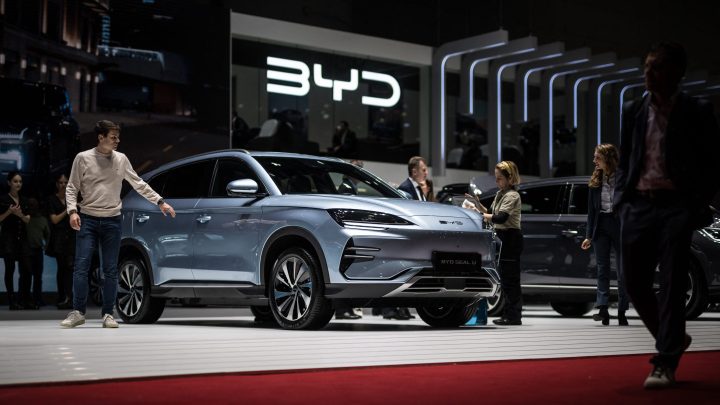
The key to growing EV adoption is cars with lower sticker prices. They may be on their way.
The key to growing EV adoption is cars with lower sticker prices. They may be on their way.

The big news this week in the automotive world has been a new Environmental Protection Agency rule that could require the majority of new cars in the U.S. to be electric or hybrid by 2032. But a few other EV developments could be just as important. The Chinese automaker BYD rolled out a small electric hatchback that sells for under $10,000. It’s not yet available in the U.S., but Ford signaled this week that it’s developing smaller, cheaper EVs too, with the aim of selling them for $25,000 by 2026.
Since electric vehicles are still pretty expensive to make, the new EVs that automakers focused on the last couple of years have been on the high end, said Jessica Caldwell, head of insights at Edmunds.
“Everything from, you know, a Hummer truck to a Lucid Air. So a lot of things, if you have a lot of money to spend, are available in the EV market,” said Caldwell.
But a lot of car buyers don’t have a lot of money to spend, and that’s the car industry’s next challenge in the EV game, she said.
“The next frontier for the EV market is really the mass market and the mass market consumer,” she said.
And that consumer doesn’t have a lot of options right now — in electric or combustion engine vehicles, said Sam Fiorani, vice president at AutoForecast Solutions.
“The problem with the market at the moment is that there’s a void of vehicles priced below $35,000. And there are plenty of buyers who want them,” said Fiorani.
That gives an opening to BYD, the Chinese company whose small, sub-$10,000 EV is turning heads, and which is reportedly planning to open a plant in Mexico. That could help it enter the U.S. market. But, Fiorani said, “Americans want inexpensive, but roomy vehicles. They do not like tiny, little cars.”
Lucky for BYD it’s figured out how to make a lot of different sizes of EVs at low costs too and still turn a profit, said K. Venkatesh Prasad, senior vice president at the Center for Automotive Research.
“What worries the legacy carmakers is the fact that it’s the tip of the iceberg,” said Prasad.
Domestic carmakers have been here before, when first Japanese and then Korean companies disrupted the U.S. car market decades ago. Competition can spur innovation. And the innovation here could mean more electric cars that more of us can afford.
There’s a lot happening in the world. Through it all, Marketplace is here for you.
You rely on Marketplace to break down the world’s events and tell you how it affects you in a fact-based, approachable way. We rely on your financial support to keep making that possible.
Your donation today powers the independent journalism that you rely on. For just $5/month, you can help sustain Marketplace so we can keep reporting on the things that matter to you.

















